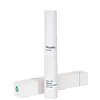What's inside
What's inside
 Key Ingredients
Key Ingredients

 Benefits
Benefits

 Concerns
Concerns

No concerns
 Ingredients Side-by-side
Ingredients Side-by-side

Water
Skin ConditioningPropanediol
SolventSodium Acrylates Copolymer
Tremella Fuciformis Extract
HumectantGanoderma Lucidum Extract
Skin ProtectingCaffeine
Skin ConditioningHyaluronic Acid
HumectantInonotus Obliquus Extract
Skin ConditioningAuricularia Auricula-Judae Extract
Skin ConditioningGrifola Frondosa Extract
Skin ConditioningNiacinamide
SmoothingMorus Alba Leaf Extract
Skin ConditioningHelichrysum Stoechas Flower Extract
PerfumingPinus Pinaster Bark Extract
AntioxidantPrunus Armeniaca Fruit Extract
Skin ConditioningTerminalia Ferdinandiana Fruit Extract
AntioxidantTocopherol
AntioxidantSimmondsia Chinensis Seed Oil
EmollientMelia Azadirachta Leaf Extract
Skin ConditioningMelia Azadirachta Flower Extract
Skin ConditioningCorallina Officinalis Extract
Skin ConditioningBetaine
HumectantCoccinia Indica Fruit Extract
Skin ConditioningGlycerin
HumectantPullulan
Lecithin
EmollientCaprylic/Capric Triglyceride
MaskingCaprylhydroxamic Acid
1,2-Hexanediol
Skin ConditioningSodium Benzotriazolyl Butylphenol Sulfonate
UV AbsorberWater, Propanediol, Sodium Acrylates Copolymer, Tremella Fuciformis Extract, Ganoderma Lucidum Extract, Caffeine, Hyaluronic Acid, Inonotus Obliquus Extract, Auricularia Auricula-Judae Extract, Grifola Frondosa Extract, Niacinamide, Morus Alba Leaf Extract, Helichrysum Stoechas Flower Extract, Pinus Pinaster Bark Extract, Prunus Armeniaca Fruit Extract, Terminalia Ferdinandiana Fruit Extract, Tocopherol, Simmondsia Chinensis Seed Oil, Melia Azadirachta Leaf Extract, Melia Azadirachta Flower Extract, Corallina Officinalis Extract, Betaine, Coccinia Indica Fruit Extract, Glycerin, Pullulan, Lecithin, Caprylic/Capric Triglyceride, Caprylhydroxamic Acid, 1,2-Hexanediol, Sodium Benzotriazolyl Butylphenol Sulfonate
 Reviews
Reviews

Alternatives
Ingredients Explained
These ingredients are found in both products.
Ingredients higher up in an ingredient list are typically present in a larger amount.
Caffeine is most associated with coffee, tea, and cacao. In skincare, it helps with calming inflammation and is rich in antioxidants.
While caffeine is used to treat cellulite and and dark circles, further studies are needed to prove this. It has been believed to help with these skin conditions due to its ability to dilate blood vessels and increase blood flow.
Some studies are looking into caffeine's ability to protect against UV rays.
Learn more about CaffeineHyaluronic acid is naturally found in healthy skin. It is a humectant, meaning it draws moisture to your skin.
This ingredient helps hydrate, soothe, and protect the skin.
What makes hyaluronic acid so hydrating? It has the capacity to bind or hold large amounts of water.
Fun fact: It is already naturally found in our bodies, such as the fluids of our eyes and our joints.
Studies find this ingredient to have anti-inflammatory and anti-microbial properties. This can help speed up wound-healing.
Hyaluronic acid can be irritating if the molecule has a low-molecular weight, or if the molecules are small.
One study found low-molecular weight hyaluronic acid to be pro-inflammatory, meaning some people may experience irritation. This is because our bodies use hyaluronic acid in the wound-healing process to signal to our bodies, via irritation, that something needs healing.
The same study found high-molecular weight hyaluronic acid to be anti-inflammatory.
These are some other common types of Hyaluronic Acid:
Learn more about Hyaluronic AcidNiacinamide is a multitasking form of vitamin B3 that strengthens the skin barrier, reduces pores and dark spots, regulates oil, and improves signs of aging.
And the best part? It's gentle and well-tolerated by most skin types, including sensitive and reactive skin.
You might have heard of "niacin flush", or the reddening of skin that causes itchiness. Niacinamide has not been found to cause this.
In very rare cases, some individuals may not be able to tolerate niacinamide at all or experience an allergic reaction to it.
If you are experiencing flaking, irritation, and dryness with this ingredient, be sure to double check all your products as this ingredient can be found in all categories of skincare.
When incorporating niacinamide into your routine, look out for concentration amounts. Typically, 5% niacinamide provides benefits such as fading dark spots. However, if you have sensitive skin, it is better to begin with a smaller concentration.
When you apply niacinamide to your skin, your body converts it into nicotinamide adenine dinucleotide (NAD). NAD is an essential coenzyme that is already found in your cells as "fuel" and powers countless biological processes.
In your skin, NAD helps repair cell damage, produce new healthy cells, support collagen production, strengthen the skin barrier, and fight environmental stressors (like UV and pollution).
Our natural NAD levels start to decline with age, leading to slower skin repair, visible aging, and a weaker skin barrier. By providing your skin niacinamide, you're recharging your skin's NAD levels. This leads to stronger, healthier, and younger looking skin.
Another name for vitamin B3 is nicotinamide. This vitamin is water-soluble and our bodies don't store it. We obtain Vitamin B3 from either food or skincare. Meat, fish, wheat, yeast, and leafy greens contain vitamin B3.
The type of niacinamide used in skincare is synthetically created.
Learn more about Niacinamide